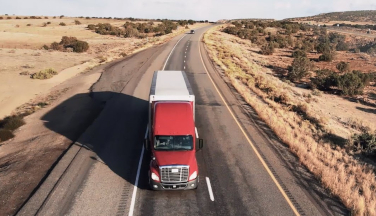Buenas prácticas para el mantenimiento del refrigerante
Primero lo primero: no ignores tu refrigerante


El refrigerante del motor —también conocido como anticongelante— es ese líquido esencial que permanece en el sistema del camión durante todo el año. Protege el motor del sobrecalentamiento en verano y evita que se congele en invierno. Tal vez por eso muchos operadores solo piensan en él cuando cambian las estaciones. Pero como mencionamos en otro artículo, el sistema de refrigeración necesita más que una revisión estacional. Un problema en este sistema puede afectar otras partes del vehículo y generar costosos tiempos de inactividad. Por eso, su inspección debe ser parte clave de tu programa de mantenimiento preventivo.
🔍 Empieza con una inspección visual
Puedes detectar mucho solo con mirar. Revisa si hay fugas en mangueras, abrazaderas o en la tapa del radiador. Lo ideal es hacer una prueba de presión con un medidor disponible en el mercado. Si notas cambios en la presión, probablemente haya una fuga.
Verifica que el nivel del refrigerante esté en la línea de llenado. Si está por debajo, estás perdiendo líquido, y la pregunta es: ¿por dónde? Si el sistema no mantiene la presión, es probable que el agua se esté evaporando. El refrigerante suele ser una mezcla de glicol y agua (50/50 o 60/40 según el clima), y perder agua altera ese equilibrio. Si ves rastros de líquido en la tapa del radiador, es señal de que el agua se está evaporando.
También revisa el estado del líquido. El tinte del refrigerante puede teñir el plástico del depósito, dificultando la visibilidad, así que lo mejor es abrir la tapa del radiador y observar directamente. El color no tiene función técnica, pero si ves tonos marrones, puede haber óxido o una mezcla de tipos de refrigerante. En ambos casos, hay que vaciar y limpiar el sistema. Si hay aceite en el refrigerante, se verá como una capa flotante: una señal grave que indica contaminación cruzada entre sistemas. Ambos líquidos deben ser reemplazados por completo.
🚚 ¿Fuga en carretera? Solo agrega agua
Si un conductor detecta una fuga en ruta, hay productos que prometen detenerla. Pero no los recomendamos: no solucionan el problema de raíz y pueden alterar la mezcla del refrigerante.
Una solución temporal más segura (y económica) es agregar agua. Aunque se reduce un poco la protección, es mejor que introducir químicos desconocidos. Esto te dará tiempo para llegar al taller y reparar el sistema correctamente.
Lo importante es no mezclar tipos de refrigerante. Hay varias formulaciones: convencional, híbrido, formulado o de vida extendida. Si no estás seguro cuál usas, lo mejor es agregar agua destilada o embotellada. Evita el agua de grifo o manguera, que puede contener impurezas.
⚖️ Mantén el equilibrio entre agua y glicol
Una herramienta clave para el mantenimiento del refrigerante es el refractómetro. Es lo que usan los laboratorios para medir la proporción de glicol y agua, y determinar el punto de congelación. Es fácil de usar y se puede conseguir en Amazon o con tu proveedor de lubricantes. Con él sabrás si necesitas ajustar la mezcla para adaptarla a tu entorno y condiciones de operación.
hevron ofrece una línea completa de refrigerantes para vehículos pesados, tanto para carretera como fuera de ella. También contamos con el Cool Tools Maintenance Kit, que incluye refractómetro, tiras de prueba, herramientas de muestreo y más. Además, nuestros expertos están disponibles para resolver cualquier duda.
💡 Recuerda: una pequeña inversión en tiempo y herramientas adecuadas puede ahorrarte grandes gastos en reparaciones y paradas no planificadas. ¡Cuida tu refrigerante durante todo el año!
11/11/2024





























